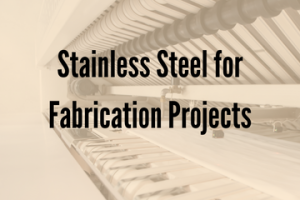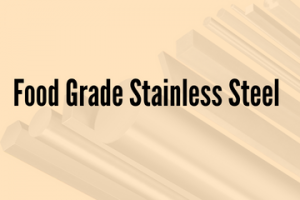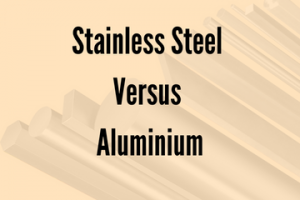Introduction
Stainless steel is an alloy containing iron with minimum 10.5% of Chromium. Chromium forms thin layer of oxide (Cr2O3) on the surface of the steel which is called as ‘passive layer’. This prevents steels from corrosion. Increasing the percentage of Chromium makes higher resistant to corrosion.
Stainless steel is called stainless because it does not get rust or discolor, unlike regular steel. This is because of the presence of chromium in the alloy
Stainless steel works different from plain steel, how?
Stainless steel contains chromium whereas plain steel includes carbon as alloy. The changes carried out by chromium in the internal structure of the steel results in the properties which gives stainless steel its name: very high corrosion resistance and a surface which does not stain or tarnish.
Properties
Higher Corrosion resistance
Higher Tensile strength
Temperature tolerance
Corrosion Resistance
The Chromium which includes in stainless steel forms self-healing protective oxide layer which makes it corrosion resistance. The self-healing behavior of the layer means the corrosion resistance remains solid regardless of its fabrication methods.
The corrosion resistant property of stainless steel will differ with various atmosphere and environments for its different grades. Grades having high percentage of chromium, molybdenum and nickel being the most corrosion resistance of stainless steels.
Tensile strength
Tensile strength is the ability of a material to hold or withstand heavy load which tends to elongate. Tensile strength is studied or measured by the maximum stress that a material can develop while being pulled or stretched before breaking.
Duplex stainless steels have higher tensile strengths than austenitic steels. The highest tensile strengths are seen in the martensitic (431) and precipitation hardening grades (17-4 PH).
Temperature tolerance
Stainless steels have very good strength and good resistance to corrosion and oxidation at very high temperatures. Stainless steels are used at temperatures up to 1700° F for 304 and 316 and up to 2000 F for the high temperature stainless grade 309 and up to 2100° F for 310.
Why Use stainless steel for your custom wire forms?
Stainless steels wire forming is widely chosen when any structure or component will be used in very harsh environment and at elevated temperatures, moisture and chemicals. It is used in various industries including medical equipment, food processing, agriculture, automotive, aerospace and lighting are commonly employ stainless steels when reliability and long term functions is very important and crucial.
Material Handling
The important role of material handling is to select the appropriate material handling equipment which is safe and can fulfill the need at very minimum possible overall cost and that is easy to hold and use smoothly.
Ultrasonic cleaning
This process uses cavitation bubbles which are produced by high frequency pressure (sound) waves to agitate a liquid. This agitation produces high forces on contaminants adhering to material like metals, plastics, glass, rubber, and ceramics. This action also penetrates blind holes, cracks, and recesses. Ultrasonic cleaning is done in aqueous solution. Ultrasonic solution has pH range of 10 or more.
Medical or food equipment sterilization
Stainless steel is also widely used in medical or food equipment sterilization process and also in part finishing processes because it does not get react further and do not produces stain.
Author Bio
Vishal Singh
The author is a Sales Engineer with Ambica Steels Limited. In his free time, he likes to write blogs and articles on Materials Science and Engineering.




